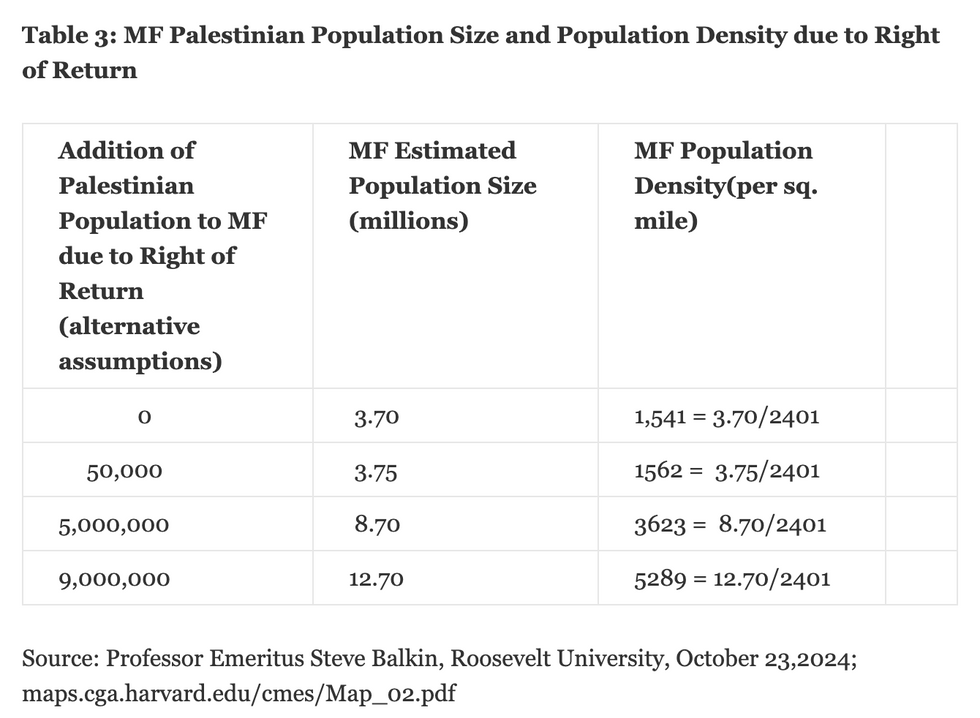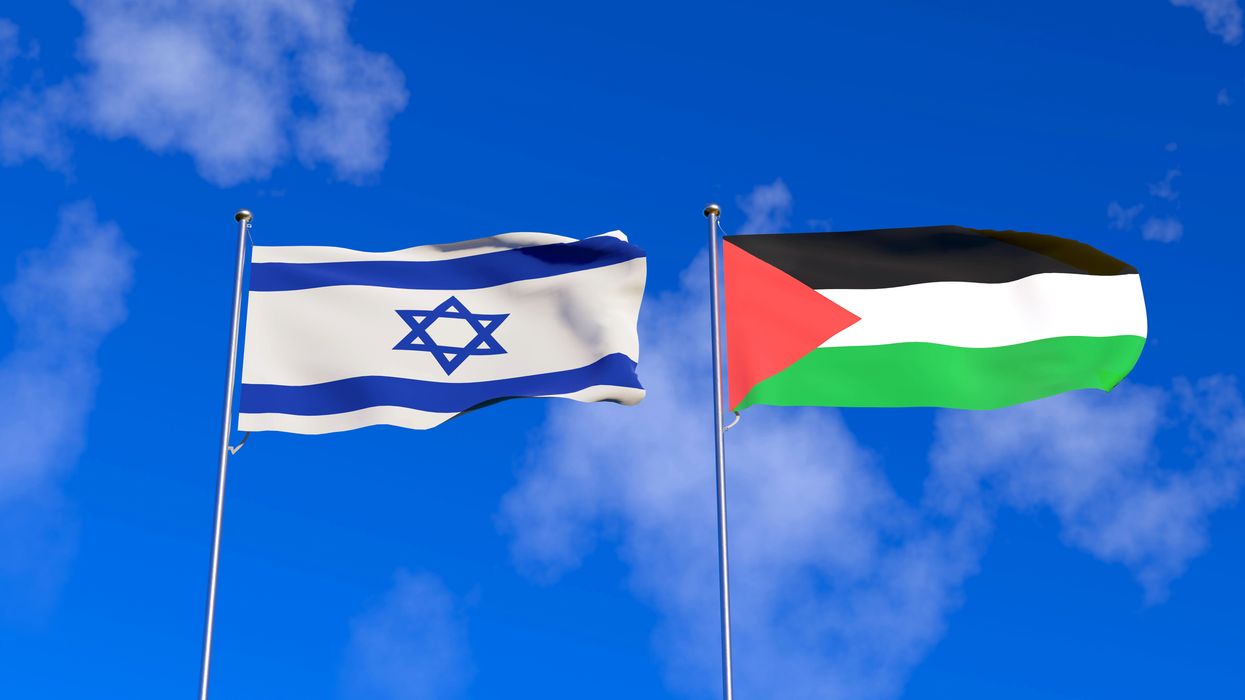A framework for peace between Israel and the Palestinians cannot be just about piecemeal de-escalation. To succeed, it must have a vision for long-term, bicultural relationships and mutual security. That is how we generate the comfort necessary to make the immediate changes to stop the casualties and bring home the hostages. That is the goal of the Balkin Israel-Palestine Project.
Presently, the majority of Israelis would like the Palestinians in the occupied territories to be gone; and a majority of those Palestinians would like the Jews not to have their own state in the Levant. This writing provides an outline for reconfiguring the land and placement of people, by religion and culture. It is not intended to be a strict edict for what must occur for there to be peace. It is instead a vision to begin a negotiation for a ceasefire followed by a more permanent peace.
Though imperfect, this proposal can provide a quicker way to peace because it overcomes the major drawbacks of the present one-state or two-state solutions: the problems of maintaining a democratic environment in a place of two strongly different groups where there is a desire for separate habitation and incentives for terrorism and war.
Establishing a new political and religious landscape
Eretz-Yisrael (EY) is the Hebrew way to say Land of Israel and Muslim Falasteen (MF) is an Arabic way to say Palestine. Judaea-Palestina (JP) was a Roman designation for the area after the Bar Kokhba Revolt in 132AD. Israel-Palestine (I-P) is a name for the confederation that includes the provinces. These names are just working titles.
But more important than names is the political, legal and religious landscape for them. There are three main constituent groups in present day Israel and Gaza-West Bank. Each should have its own semi-autonomous, semi-sovereign province be but governmentally connected to each other in a weak confederation. EY is to be for conservative religious Jews with strong ties to the Likud Israeli Parliamentary Coalition, with its capital in West Jerusalem. MF is to be for conservative religious Arabic Muslims with its capital in East Jerusalem. JP is for people who are liberal, pluralistic and tolerant of all religions and lifestyles, including atheists, with its capital in a small dot of land in Jerusalem proximate to EY and MF.
The three provinces are the political elements of the weak confederation of I-P. with its capital in a small dot of land carved into an area at the border of West and East Jerusalem.
It is important to remember that in the early years of the United States, from 1777 to 1789, the Articles of Confederation established a weak central government.
These three provinces would be semi-autonomous rather than fully autonomous in that all have to adopt the Universal Declaration of Human Rights, in the main, as an essential part of their constitutional framework. The UDHR was created 75 years ago by the United Nations General Assembly.
Especially important are articles 1 (born fee and equal in brotherhood), 3 (right to life, liberty, and security), 15 (right to a nationality), 18 (freedom of thought, conscience and religion), 21 (periodic and genuine elections), and 26 (education is to promote understanding, tolerance and friendship).
Security requirements, new transportation linkages, land swaps and the promotion of harmonious habitation need to be taken into account when drawing the internal boundaries to create the three provinces This will require a committee of experienced political geographers who know the history of Israel and Gaza-West Bank.
How many states would there be?
Is this a three-state solution, or a one-state solution, or a four-state solution or a two-state solution with some add-ons? With nuance, it is all of the above.
This is a three-province solution with the provinces differentiated by religion and liberality, tied together as part of a weak confederation. This new reconfiguration of Israel and Gaza-West Bank would be created in the aftermath of a very brutal and bitter war with a long history of mutual enmity. Therefore, the combatants should be separated while those who profess non-violence and cross-cultural toleration should be able to live together in an environment of cooperative coexistence.
The purpose for the overarching confederation is to: 1) act as a referee to resolve inter-provincial disputes, 2) oversee the protection of national borders, 3) create and execute a foreign policy that is not accomplished by the provinces, 4) achieve economies of scale in governance and 5) deal with externalities.
The confederation level is purposely designed to be weak so the culturally disparate provinces have maximum autonomy.
To get a better sense of this new configuration, estimates were generated for the population size of the three provinces.

Surprisingly, the province with the largest population is JP. Next is ER. In population size, the smallest province is MF. But Muslims predominate in MF and JP. It is unclear how this might play out politically in the future.
Guaranteeing the existence of a forever Jewish state
The goal is to make the central confederation government weak when it comes to controlling lifestyles in the provinces so as to minimally impose on the cultural and religious basis for each while, at the same time, placing strong preventative intervention in the militaristic and bellicose aspects of individual and group behavior.
One should be able to live by the norms that your religion and philosophy prescribe but in a peaceful and respectful way. Provinces should be able to restrict the types of food and clothing that are available and what you can or cannot do on your holy days but do not attack your neighbors who may do it differently; and let their inhabitants vote with their feet (move) if they want to.
In addition to the UDHR, there must also be adherence to Singapore’s Maintenance of Religious Harmony Act which defines the following as punishable offenses:
“Urging force or violence on the basis of religion, or against a religious group or its members; inciting feelings of enmity, hatred, ill-will or hostility against a religious group; and insulting the religion or wounding the religious feelings of another person.”
To guarantee the preservation of the Jewish province of Eretz Yisroel and the Muslim province of Filasteen, the Torah will be allowed as a basis for statutes in Eretz Yisrael where Halacha laws can be adjudicated in Batei Din courts, and the Quran will be allowed as a basis for statutes in Muslim Filasteen, where Sharia law can be adjudicated in their courts. These two provinces must be able to keep their religious and cultural character. But the supreme law of the land would be based on UDHR and MRHA; and Halacha and Sharia laws are secondary to it.
As an extra layer of defensive protection in the early years of this new confederation, each state should be linked to an ally protector nation or nations. MF could be linked to Jordan, Qatar or Ireland (or all three). For EY its protector nation can be Canada, Great Britain or Australia (or all three); and for JP it can be Norway, Germany or France (or all three). For I-P, it can be the United States and Saudi Arabia.
Guaranteeing religious practices and cultures
Provincial preferences for religion and culture must be maintained now and into the future. Built into the provincial and confederation constitutions would be the principles that no amount of Muslim population growth and military acquisition would be allowed to dilute Jewish political power and cultural dominance in EY; no amount of Jewish population growth and military acquisition would be allowed to dilute Muslim power and cultural dominance in the MF; and no amount of demographic or religious imbalance in JP could push it to adopt a state religion.
One way to do this is to restrict one’s voting only to their designated province. For example, a conservative religious Muslim may choose to live in EY or JP to be close to a vacation amenity or a holy site, but they could only vote in MF. Similarly, a conservative religious Jew may choose to live in MF or JP but they could vote only in EY.
How to deal with Jewish settlers in the West Bank
One solution is to allow the settlers residential access to places that have Jewish holy sites that are not Muslim holy places while diluting the settlers’ power limiting their voting power to EY. For places with Jewish holy sites that also have Muslim holy sites (e.g. Cave of the Patriarchs in Hebron), a sharing arrangement for space and access will have to be created through the consideration of tradition and negotiation using the design and administrative help of the Hashimite Kingdom of Jordan.
The settlers should transfer back to MF all the land that was obtained through the use of force. The land where settlers live in the West Bank that was obtained legally would have to be exchanged to the MF, in the same amount and quality, elsewhere in Israel. MF will need to have a land connection from Gaza to the West Bank. That highway and land can be part of the transfer land to MF for settler land.
Determining governance at the confederation level
Ruling at the confederation level would be more intricate to keep it inclusive but also weak. Here is one suggestion:
Each province elects or proposes two representatives who become an executive committee that rules as a group but only by unanimous consent (sometimes called consensus decision making), which means each of the six members of the ruling executive committee has veto power. Over time, the executive committee can change the way it is composed and how the confederation is to be governed, perhaps replacing the executive committee with a national parliament.
Law of return and population density
There are two Laws of Return: a Jewish one and a Palestinian one.
Population size and density estimates show what would happen if Jewish people, the world over, made full use of the Right of Return to the present Israel, not including the occupied territories.

Population size and density estimates have also been generated if Arab Muslims who had a connection to living in pre-1948 Palestine were to make full use of their Right of Return. Returnees would be restricted to Muslim Filisteen, using the land size of Gaza plus the West Bank as a proxy for the land area of Muslim Filisteen.

In 1948 or 1967, the ability to easily and safely build high-density environments with very tall buildings was limited. But now it is relatively easy and safe to do. In 2024, the tallest building in the world is in Dubai in the United Arab Emirates. It is 2,717 feet high.
However, there should be prior conditions of no-radicalization that could preclude one from moving to MF, JP or EY from outside I-P. Those conditions would be: no prior association or membership in ISIS, Hamas or Islamic Jihad. All returnees must sign a formal agreement to the principles of UDHR and MRHA and failure to abide by those rules will result in deportation from anywhere in I-P.
Conclusion
The vision is an attempt to give each side to this dispute what they want: thoroughly conservative religious Jewish and Arab Muslim provinces and a liberal pluralistic province for Jews, Muslims, people of other religions, atheists and a variety of lifestyles.
The biggest problems are accommodating the Laws of Return, eliminating the risk of terrorism to Israel from radical militant Palestinians and the risk of settler terrorism to Palestinians. New construction technology suggests that there need not be density and immigration size restrictions with a full Law of Return.
Having confederation and provincial constitutions based on human rights, religious tolerance and non-violence, as essentially stated in the UDHR and the MDRA, are important ingredients in making this three-province arrangement democratic and capable of lasting over time while accommodating religious and cultural differences.
Balkin is a professor emeritus at Roosevelt University and a member of the Chicago Political Economy Group. His research focuses on violence prevention, international development, entrepreneurship and cultural preservation. Email: sbalkin@roosevelt.edu





















